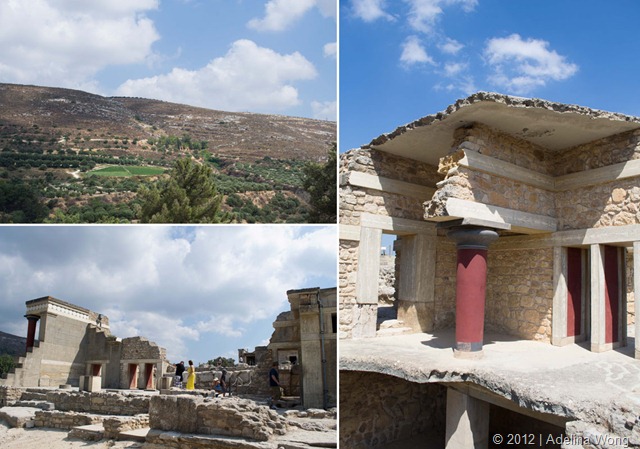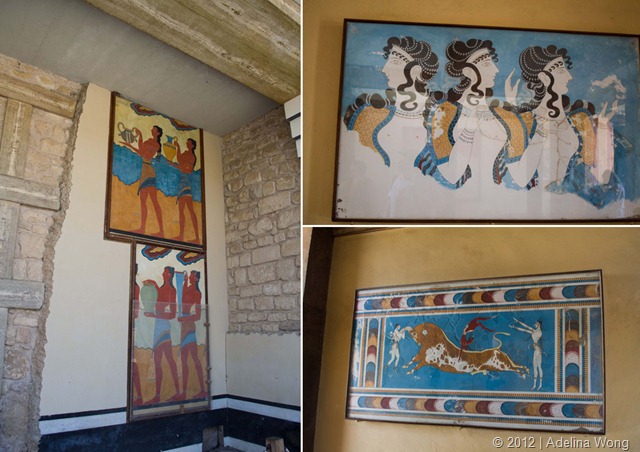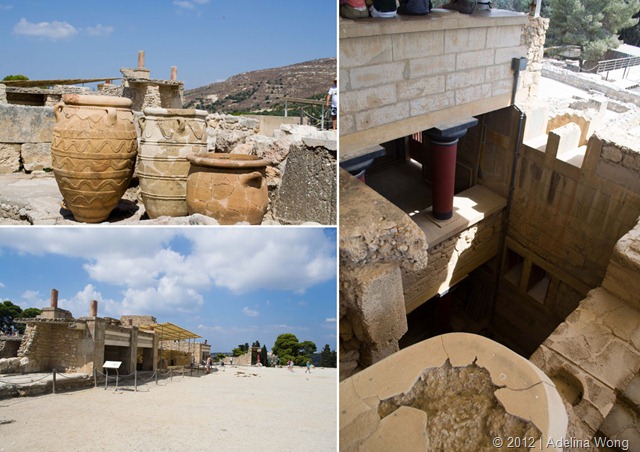Exploring Knossos
To take advantage of having a car, our second full day on Crete was dedicated to exploring the ancient city of Knossos, which is now an archeological site just outside of Heraklion. Knossos was inhabited for several thousand years, beginning with a settlement sometime in the seventh millennium BC during the Neolithic Period, and was abandoned after its destruction in 1375 BC which marked the end of Minoan civilization. The site was excavated and restored in the early 20th century by Arthur Evans.
According to Greek mythology, the King Minos had commissioned the architect Dedalos to build the palace in a way that no one can find the exit, to ensure that the King’s son, the Minotaur, could not escape. The King then kept Dedalos, and his son Ikaros, prisoners so that they could not reveal the palace plan to anyone. Dedalos, who was a great inventor, built two sets of wings so they could fly off the island. He warned his son to not fly too close to the sun as the wax used to bind the wings together would melt. But Ikaros flew too close to the sun and his wings fell apart.
General Features
The palace is built on a slight hill which allows the palace to keep quite cool in the summer, despite the stifling heat. In certain parts of the tour, you could really feel the strong gusts of wind coming off the sea which was a welcomed relief (it really was much too hot for my liking). According to Evans, the palace consisted of 1300 rooms connected by corridors of varying size and directions. There were entrances to the palace facing each direction. The North Entrance led to the harbour and was how visitors arriving by sea entered Knossos.
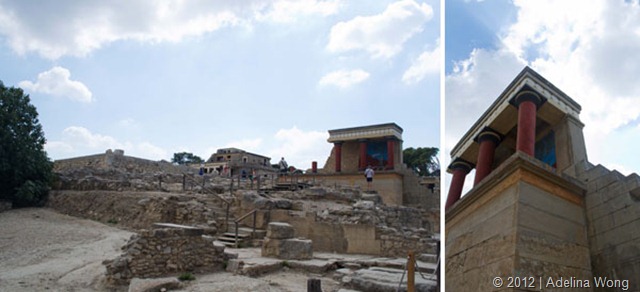 The North Entrance. Evans reconstructed it and decorated it with the “Bull” fresco.
The North Entrance. Evans reconstructed it and decorated it with the “Bull” fresco.
Water Management
The palace was unique in that it had is own water management system. Pipes were built from a hill that was 10 km away. Our tour guide pointed it out to use and it was quite the distance to have built pipes to move water. The palace and surrounding areas all had access to running water. Beyond that, the palace also had its own drainage pipes for sanitation. The Queen’s bathroom had a “flushing” toilet. Also, because of occasional floods the palace had a runoff system so to move the water around.
Storerooms (Magazines)
Below the palace are a series of storerooms where anything the palace needed was kept. There were barrels that held grains, oil and other food stuffs. It was lit by a series of lamps. Not so smart considering what was stored there. Needless to say, this lead to disaster when an earthquake struck, knocking the flames off the walls and into the items stored there, leading to massive fires that destroyed the palace.
Throne Room
The Throne Room is thought to be the centerpiece of Knossos. On the north wall, a throne is placed and flanking it are images of Griffins. It is thought that this throne is the oldest in the Aegean region.
Controversy
This site has a troubled background, due to how it was excavated and preserved. The methods used by Evans has been criticized by many modern archaeologists as being an over-interpretation of what remained, and of introducing materials foreign to Minoan architecture (such as concrete).
Knowing all this, I still wanted to visit the site. We signed up for a tour with a guide who was able to provide detailed information about the site. While it was interesting to see the site and hear the stories associated with the site, I really felt that so much of it was speculation. Many of the “buildings” were just reproductions or if they were real, only small parts of the original remained. Almost everything we looked at was fake – just put there for tourists to look at – almost like Disneyland.
Part of the reason why so little remains is because the city was destroyed twice by fire and natural disasters.
The above information was presented to us in our tour and I really don’t know how much of it is true and how much of it is speculation and a reconstruction. Before going to the sight, maybe people highly recommended visiting it, but I’m not sure I completely agree. But I guess its worth a visit to see for yourself.
Here are some more photos of our visit:
And perhaps the best view of the day – a sunset as we drove home.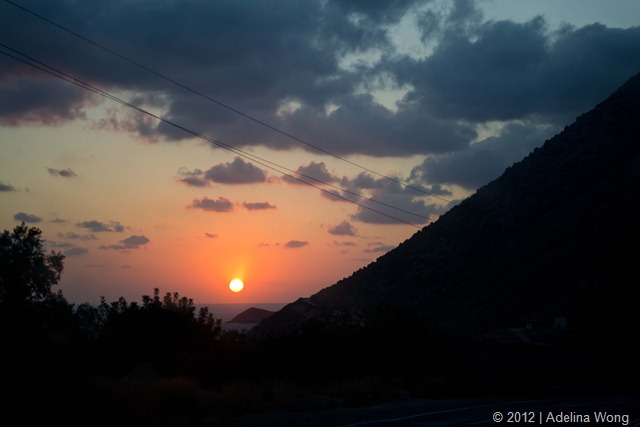
Been to Knossos? What were your thoughts?
PS. Check out the rest of my posts about Greece!
